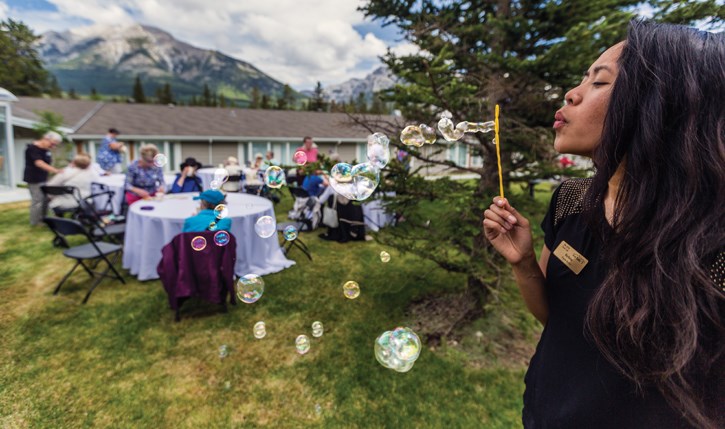BOW VALLEY – By 2027, the Bow Valley will need about 1,100 additional units of non-market housing, including continuing care, affordable rental, permanent supportive housing and affordable homeownership.
That’s according to a new housing needs assessment, which indicates the valley risks losing essential people like industry workers, grocery and retail clerks, home care aides, nurses, social workers, police officers, daycare workers, teachers, middle managers and other professionals without genuinely affordable long-term housing.
Officials say a lack of genuinely affordable, safe and appropriate long-term housing jeopardizes the Bow Valley’s ability to retain people who love the valley and workers considered critical to the community.
“The need is real, and we need to address the need, or we’re going to gut the valley of local people,” said Canmore Councillor Joanna McCallum, who sits on the board for Bow Valley Regional Housing (BVRH).
“If we do nothing, the worst case scenario is we could have 40 per cent of our population that are non-permanents that don’t live here, and I don’t think I want to live in that kind of community. I don’t think that’s the kind of community I was elected to nurture.”
The assessment, by Bow Valley Regional Housing (BVRH) and Canmore Community Housing Corporation (CCHC), used 2016 data to determine the current state of housing in the valley, noting the region is experiencing multiple pressures on the housing market.
Vacant rental housing is scarce, well below the provincial average, and developable lands in the Bow Valley are finite. Many of the new homes being built in Canmore, which attracts wealthy people, including second homeowners, are at the higher end of the price spectrum.
“Open market forces hamper the likelihood that the private market can create enough low and moderate-end housing supply to alleviate affordability needs,” the assessment stated.
The study determined a need for another 1,100 units of non-market housing by 2027 on top of what already exists, or will soon be in place. That includes 137 units for continuing care, 643 affordable rental, 63 permanent supportive housing and 250 affordable homeownership.
The valley’s population continues to grow, however, with the assessment predicting almost another 5,000 people in the next nine years, bringing the permanent population to 29,600 by 2027. Of this, Banff, which has strict need-to-reside rules, will account for about 800.
The study concluded most renter households, about 660, spend more than 30 per cent of their pre-tax income on rent, with a median income for renters throughout the region at about $71,162.
At the same time, rental rates in the Bow Valley rose about three times faster than inflation between 2006 and 2016, with median rent costs about $1,393 a month in 2016 – and even more now.
In addition, overcrowding occurs twice as much as provincial norms, while the number of homes in major disrepair is about 30 per cent more than Alberta’s average, raising health and safety risks.
Banff Councillor Grant Canning, who is chair of BVRH, said the assessment reinforces what is known valley-wide – the region needs more affordable housing.
“The rental market is really struggling, and it’s a combination of people in severe affordability crisis as well as the overcrowding issue,” he said.
The study also shows that of the 663 struggling renter households paying 30 percent of their pay checks on housing, about 200 of those are paying more than 50 percent of their income on housing.
“That’s obviously a real concern,” Canning said. “If you take it one step further, about 20 per cent of them are low-income seniors. They are really struggling as well.”
The study speaks to a need for long-term care and supportive living for older adults who need housing that provides personal care services, such as meals, housekeeping, activities, specialized furniture and equipment, and, or nursing care.
Based on 2016 data, an estimated 73 continuing care units are needed in the short-term.
But Canning said phase one of the Bow River Lodge project in Canmore is complete and the next phase, which is in the design stage and expected to open by 2021, will address much of the current need.
“That doesn’t mean 10 years from now that we won’t have a problem, we know there’s going to be a shortfall again,” he said. “In the near term, we are in pretty good shape to be honest, as far as meeting our current needs in those particular segments.”
As for homeowners, the assessment said most owners that spend more than 32 per cent of their collective pre-tax income on housing are deemed to be unable to afford their housing.
It found that the 2016 median income of owners is $117,000, with housing costs growing about twice as fast as inflation between 2011-16.
“250 of the region’s renter households have the means (incomes between $70,000 and $110,000) and interest to purchase homes, but face some of the highest costs in Canada,” the study concluded.




